Ethyl 2-cyano-3,3-diphenylacrylate
Synonym(s):2-Cyano-3,3-diphenyl-2-propenoic acid ethyl ester;Ethyl α-cyano-β,β-diphenylacrylate;Ethyl 2-cyano-3,3-diphenyl-2-propenoate
- CAS NO.:5232-99-5
- Empirical Formula: C18H15NO2
- Molecular Weight: 277.32
- MDL number: MFCD00027364
- EINECS: 226-029-0
- SAFETY DATA SHEET (SDS)
- Update Date: 2025-12-17 09:49:38
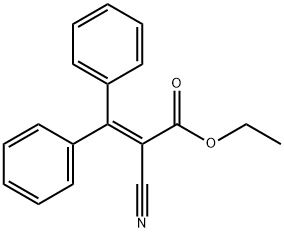
What is Ethyl 2-cyano-3,3-diphenylacrylate?
Description
Etocrylene is an organic ester that appears as an off-white crystalline powder and functions as a UV absorber. When applied to the skin, this product absorbs UV rays. It can also be used to protect cosmetics and personal care products from deterioration. This product can be used in the formulation of sun protection products, as well as bath, skin, cleansing, hair, nail and fragrance products.
The Uses of Ethyl 2-cyano-3,3-diphenylacrylate
Ultraviolet screen.
The Uses of Ethyl 2-cyano-3,3-diphenylacrylate
Ethyl 2-Cyano-3,3-diphenylacrylate is a sunscreen ingredient.
Synthesis Reference(s)
Journal of the American Chemical Society, 63, p. 3452, 1941 DOI: 10.1021/ja01857a057
Tetrahedron Letters, 33, p. 7535, 1992 DOI: 10.1016/S0040-4039(00)60817-1
Synthesis
The preparation method of Ethyl 2-cyano-3,3-diphenylacrylate includes the following steps: add cyclohexane and benzophenone to the reaction kettle, wait until the benzophenone is completely dissolved, then raise the temperature to 102-104°C and keep it warm. Then, add sodium bicarbonate as a catalyst, add ethyl cyanoacetate into the dripping storage tank, slowly add ethyl cyanoacetate dropwise into the reaction kettle, and react for 16 to 18 hours. During the reaction, the water generated is separated in time, and the reaction is completed. The product Ethyl 2-cyano-3,3-diphenylacrylate is obtained.
Properties and Applications
Ethyl 2-cyano-3,3-diphenylacrylate, another name Etocrylene, belongs to acrylic acid or the like UV light absorbers and is mainly used in making UV light absorbers in plastics, coating, dyestuff, vehicle glass, makeup, sun-screening agent. Because acrylate-based, two phenyls of this product and carbonyl can form a larger π key; thus, the structure shape of this product has extremely strong ultraviolet absorption ability.
References
[1] Hisashi Matsumoto, Yasuhiko Suzuki, Shinichi Adachi. “[Estrogenic activity of ultraviolet absorbers and the related compounds].” Yakugaku zasshi?: Journal of the Pharmaceutical Society of Japan 125 8 (2005): 643–52.
[2] Marlene Vila . “Ultrasound-assisted emulsification microextraction followed by gas chromatography–mass spectrometry and gas chromatography–tandem mass spectrometry for the analysis of UV filters in water.” Microchemical Journal 124 (2016): Pages 530-539.
Properties of Ethyl 2-cyano-3,3-diphenylacrylate
| Melting point: | 97-99 °C(lit.) |
| Boiling point: | 174 °C0.2 mm Hg(lit.) |
| Density | 1,05 g/cm3 |
| refractive index | 1.5100 (estimate) |
| storage temp. | Sealed in dry,Room Temperature |
| solubility | soluble in Methanol |
| form | powder to crystal |
| color | White to Almost white |
| InChI | InChI=1S/C18H15NO2/c1-2-21-18(20)16(13-19)17(14-9-5-3-6-10-14)15-11-7-4-8-12-15/h3-12H,2H2,1H3 |
| CAS DataBase Reference | 5232-99-5(CAS DataBase Reference) |
| EPA Substance Registry System | Ethyl 2-cyano-3,3-diphenylacrylate (5232-99-5) |
Safety information for Ethyl 2-cyano-3,3-diphenylacrylate
| Signal word | Warning |
| Pictogram(s) |
 Exclamation Mark Irritant GHS07  Environment GHS09 |
| GHS Hazard Statements |
H315:Skin corrosion/irritation H319:Serious eye damage/eye irritation H335:Specific target organ toxicity, single exposure;Respiratory tract irritation H410:Hazardous to the aquatic environment, long-term hazard |
| Precautionary Statement Codes |
P261:Avoid breathing dust/fume/gas/mist/vapours/spray. P264:Wash hands thoroughly after handling. P264:Wash skin thouroughly after handling. P271:Use only outdoors or in a well-ventilated area. P273:Avoid release to the environment. P302+P352:IF ON SKIN: wash with plenty of soap and water. P305+P351+P338:IF IN EYES: Rinse cautiously with water for several minutes. Remove contact lenses, if present and easy to do. Continuerinsing. |
Computed Descriptors for Ethyl 2-cyano-3,3-diphenylacrylate
| InChIKey | IAJNXBNRYMEYAZ-UHFFFAOYSA-N |
| SMILES | C(OCC)(=O)/C(/C#N)=C(/C1=CC=CC=C1)\C1=CC=CC=C1 |
New Products
4,4-Difluoropiperidine hydrochloride tert-butyl 9-methoxy-3-azaspiro[5.5]undecane-3-carboxylate Indole Methyl Resin N-Isopropylurea N,N-Dicyclohexylcarbodiimide(DCC) MELDRUMS ACID 5-METHYLISOXAZOLE-4-CARBOXYLIC ACID Magnessium Bis glycinate Zinc ascorbate 1-bromo-2-butyne 2-acetamidophenol 9(10H)-anthracenone Erythrosin B, 4-Piperidinopiperidine 2-((4-morpholinophenylamino) (methylthio) methylene) malononitrile 2,4-dihydroxybenzaldehyde 3-(4-morpholinophenylamino)-5-amino-1H-pyrazole-4-carbonitrile Methyl 2-methylquinoline-6-carboxylate 2,6-dichloro-4-nitropyridine 4-Bromo-2-chlorobenzonitrile 2-(benzylamino)acetic acid hydrochloride 4-(tert-Butoxycarbonylamino)but- 2-ynoic acid 3,4-dihydro-2H-benzo[b][1,4]dioxepine 1-Phenyl-1-cycloprppanecarboxylicacidRelated products of tetrahydrofuran
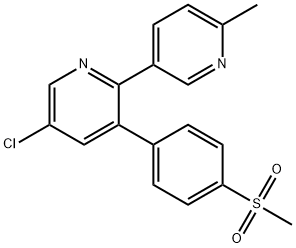
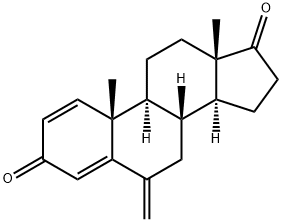



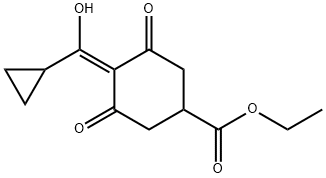
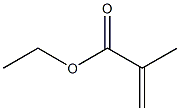

You may like
-
 5232-99-5 Etocrilene 98%View Details
5232-99-5 Etocrilene 98%View Details
5232-99-5 -
 Ethyl 2-cyano-3,3-diphenylacrylate 98% CAS 5232-99-5View Details
Ethyl 2-cyano-3,3-diphenylacrylate 98% CAS 5232-99-5View Details
5232-99-5 -
 Ethyl 2-Cyano-3,3-diphenylacrylate CAS 5232-99-5View Details
Ethyl 2-Cyano-3,3-diphenylacrylate CAS 5232-99-5View Details
5232-99-5 -
 Ethyl 2-cyano-3,3-diphenylacrylate CAS 5232-99-5View Details
Ethyl 2-cyano-3,3-diphenylacrylate CAS 5232-99-5View Details
5232-99-5 -
 Ethyl 2-cyano-3,3-diphenylacrylate CAS 5232-99-5View Details
Ethyl 2-cyano-3,3-diphenylacrylate CAS 5232-99-5View Details
5232-99-5 -
 20677-73-0 (2,2-diethoxyethyl)methylamine 98%View Details
20677-73-0 (2,2-diethoxyethyl)methylamine 98%View Details
20677-73-0 -
 3-(4-(hydroxyamino)-1-oxoisoindolin-2-yl)piperidine-2,6-dione 98%View Details
3-(4-(hydroxyamino)-1-oxoisoindolin-2-yl)piperidine-2,6-dione 98%View Details -
 57381-49-4 2-bromo-4-chlorobenzonitrile 98%View Details
57381-49-4 2-bromo-4-chlorobenzonitrile 98%View Details
57381-49-4
